In recent years, the air fryer market has seen a surge in popularity, not just in Europe and the US, but globally. This rise has been fueled by a combination of health-conscious consumers seeking healthier cooking alternatives and technological advancements that make these appliances more efficient and user-friendly. As the industry continues to evolve, it’s important to understand the dynamics at play, from certification standards to market trends and the challenges and opportunities facing Original Equipment Manufacturers (OEMs). This article delves into the intricacies of the CE certified air fryer market, exploring the factors shaping its growth and the future outlook for OEMs.
Introduction to the Air Fryer Market in Europe and the US
The air fryer market has seen a significant surge in popularity, particularly in Europe and the US, where health-conscious consumers are seeking alternatives to traditional frying methods. These compact kitchen appliances have revolutionized the way we cook, offering a healthier, quicker, and more convenient option for preparing a variety of dishes. In this section, we delve into the current state of the air fryer market in these two regions, exploring its growth trajectory, key players, and the factors that are shaping its future.
Europe, known for its culinary diversity and preference for healthier eating habits, has embraced the air fryer as a staple in modern kitchens. The continent’s air fryer market has experienced a rapid expansion, driven by the growing awareness of the health benefits of air frying, which reduces the amount of oil needed compared to traditional frying. Key countries like Germany, the UK, and France have seen a surge in demand, with a preference for high-quality, CE certified air fryers that meet stringent safety and performance standards.
Similarly, in the US, the air fryer market has been on a steady climb, propelled by the health and wellness movement. Americans are increasingly looking for ways to enjoy their favorite fried foods with a fraction of the fat and calories. The market has seen a variety of players enter the scene, from well-known kitchen appliance brands to niche startups offering innovative designs and features.
The appeal of air fryers in both regions lies in their versatility. They can be used to cook a wide range of foods, from crispy French fries and chicken wings to fish fillets and even desserts. This versatility has made air fryers a must-have for anyone looking to incorporate more healthful cooking methods into their daily routine.
One of the standout features of the air fryer market in Europe and the US is the emphasis on quality and safety. The CE mark, which stands for Conformité Européenne, is a vital certification for electrical and electronic products sold within the European Economic Area. It signifies that a product meets all the necessary health, safety, and environmental protection requirements set by European legislation.
In the US, while the CE mark is not a legal requirement, it is often seen as a seal of quality and reliability. This is particularly important in the air fryer market, where safety is a top concern. Consumers are looking for products that have undergone rigorous testing and compliance with international standards, ensuring that the appliances they purchase are not only efficient but also safe to use.
The rise of the air fryer market has been bolstered by several key factors. First, the growing number of health-conscious consumers has led to a demand for cooking methods that reduce fat content without compromising taste. Second, the ease of use and quick cooking times of air fryers have made them a convenient choice for busy households. Lastly, the innovative features and designs offered by manufacturers have attracted a wide audience, from young professionals to families.
In Europe, the market is further influenced by the region’s cultural diversity. For instance, in Southern European countries, there is a preference for air fryers that can mimic the traditional methods of cooking, such as those that offer adjustable temperature settings and timer functions. Meanwhile, in Northern European countries, there is a trend towards energy-efficient models that reduce electricity consumption.
The US market, on the other hand, is characterized by a strong focus on technology and innovation. Smart air fryers with connectivity features, such as Bluetooth compatibility or apps that allow users to control their appliances remotely, are gaining traction. These features not only enhance the user experience but also cater to the tech-savvy consumer base.
As the air fryer market continues to grow in Europe and the US, manufacturers are focusing on expanding their product lines to meet the diverse needs of consumers. One of the key areas of growth is in the OEM (Original Equipment Manufacturer) sector, where companies are partnering with established brands to produce custom air fryers.
CE certified air fryer OEMs play a crucial role in this market by providing manufacturers with high-quality, compliant products. These OEMs often have extensive experience in the industry and can offer a range of solutions, from standard models to those with unique features. By working closely with their clients, OEMs can ensure that the final product meets both the brand’s requirements and the consumer’s expectations.
In conclusion, the air fryer market in Europe and the US is a dynamic and rapidly evolving sector. Driven by health trends, technological advancements, and consumer demand for convenience, the market is poised for continued growth. As the industry expands, the role of CE certified air fryer OEMs will become increasingly important in delivering products that not only meet safety standards but also enhance the overall cooking experience.
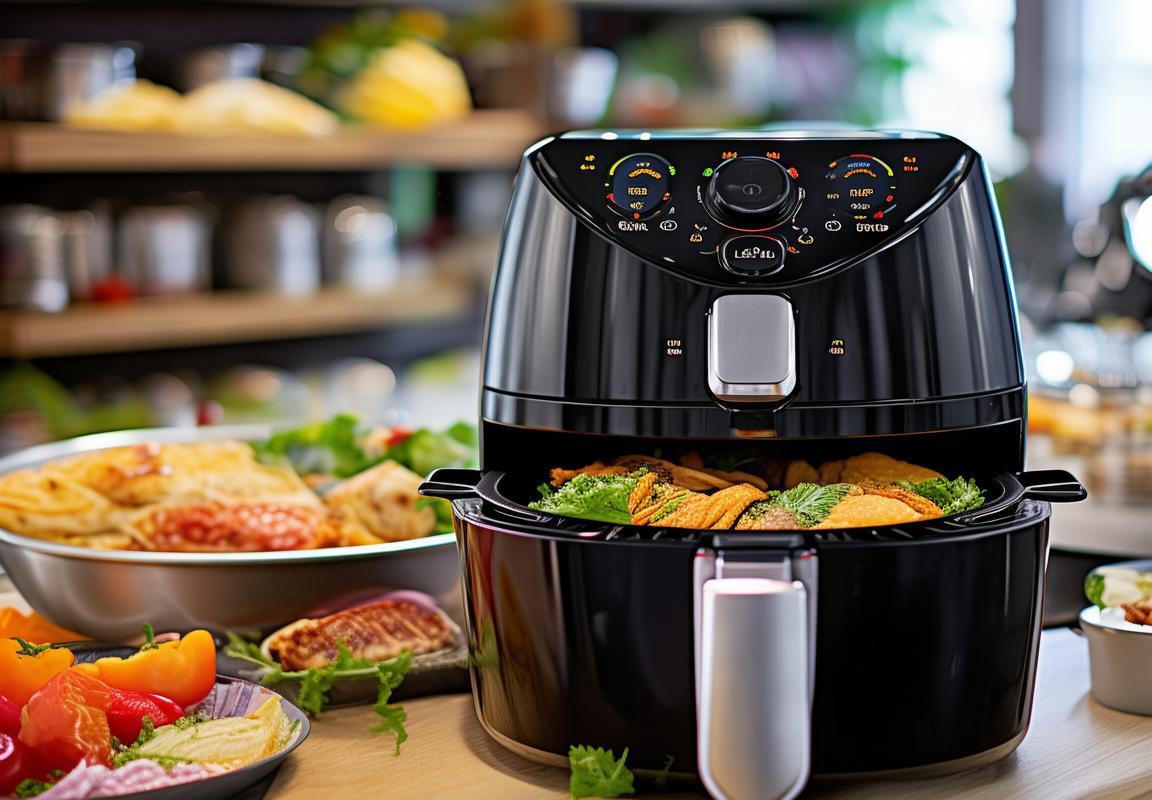
The Rise of CE Certified Air Fryers: A Trend Analysis
The surge in popularity of CE certified air fryers has been nothing short of remarkable. Once a niche product, these appliances have now become a staple in many European and American households. This trend analysis delves into the factors contributing to this rise, exploring how the market has evolved and what it indicates for the future.
Consumers are increasingly health-conscious, and the air fryer’s ability to cook food with minimal oil has struck a chord. This shift in dietary preferences has propelled the demand for CE certified models, which ensure compliance with European standards and often come with additional safety and quality guarantees.
As the convenience of air frying gained traction, manufacturers stepped up their game. The introduction of various features, such as programmable settings, easy-to-use interfaces, and sleek designs, has made air fryers more appealing. The CE certification has become a seal of approval for these innovations, assuring consumers of a high-quality product.
The integration of smart technology has also played a significant role. Air fryers with Wi-Fi capabilities, allowing for remote monitoring and control, have become popular. CE certification not only covers the physical aspects of the appliance but also its digital components, ensuring that these smart features meet stringent safety regulations.
The competitive landscape has seen a surge in new entrants, with both established kitchen appliance brands and startups offering CE certified air fryers. This competition has driven innovation and pushed prices down, making air fryers more accessible to a broader market. The certification process has acted as a barrier to entry, favoring companies that can invest in quality control and compliance.
Another contributing factor to the rise of CE certified air fryers is the influence of social media and celebrity endorsements. Influencers and chefs have been showcasing the benefits of air frying, often highlighting the CE certification as a trust factor. This has helped to create a buzz around the product, further boosting sales.
The environmental movement has also had a hand in the air fryer’s popularity. As more consumers become aware of the impact of traditional cooking methods on the environment, the energy-efficient nature of air fryers has become a selling point. CE certified models are often more energy-efficient than their non-certified counterparts, making them an eco-friendly choice.
The market for CE certified air fryers has also been influenced by the growing preference for home cooking and meal prepping. With busy lifestyles, many consumers are seeking ways to prepare healthy meals without compromising on taste or time. Air fryers offer a quick and easy solution, and the certification adds an extra layer of assurance for those looking to take control of their diet.
The rise of CE certified air fryers has also been fueled by the availability of a wide range of recipes and cooking techniques. From crispy French fries to tender chicken wings, the versatility of air fryers has been widely embraced. Consumers are not only attracted to the health benefits but also to the ability to recreate restaurant-quality dishes at home.
As the market continues to grow, manufacturers are focusing on expanding their product lines to cater to different consumer needs. This includes everything from countertop models to built-in ovens, all with the CE certification. The diversity in the market has created a competitive environment that encourages innovation and continuous improvement.
The analysis of the rise of CE certified air fryers reveals a market that is dynamic and evolving. It’s a testament to the power of technology, consumer demand, and environmental consciousness. As the trend continues, it’s likely that we’ll see further advancements in air fryer technology, as well as an increase in the number of brands seeking CE certification to capture this burgeoning market segment.
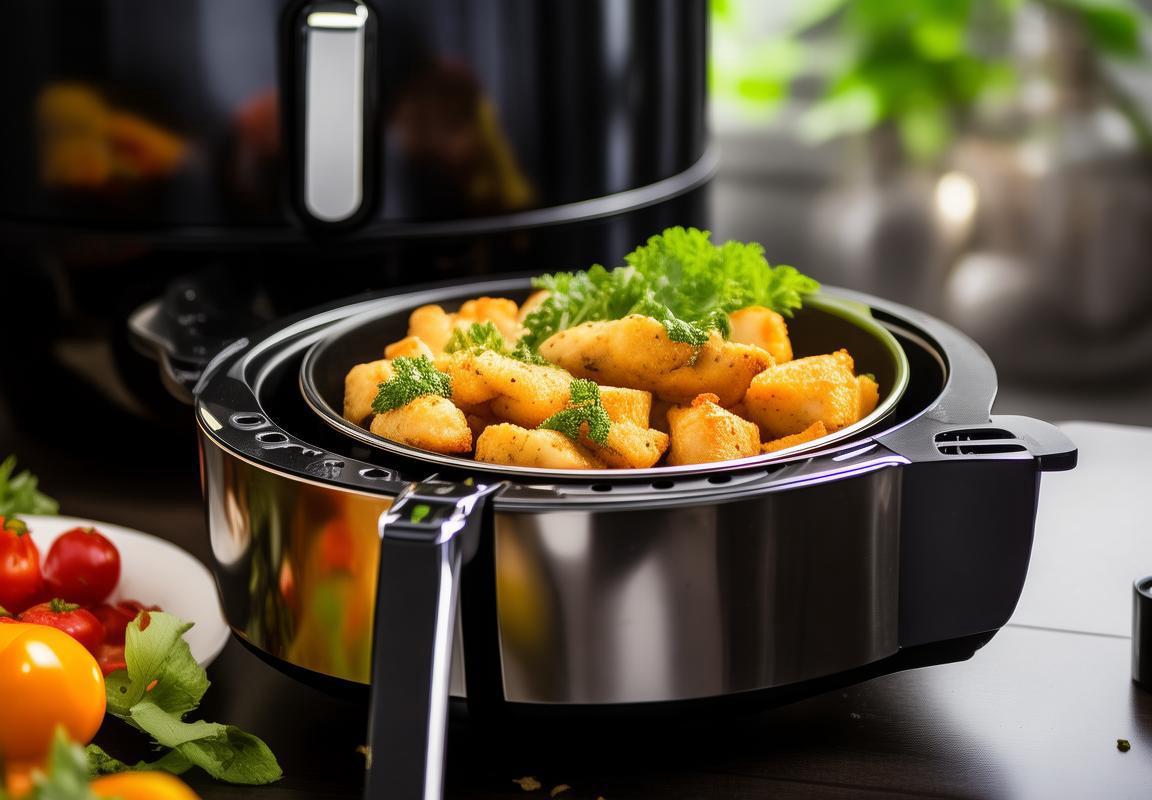
Understanding CE Certification: What It Means for Consumers and Manufacturers
CE certification stands as a pivotal mark of quality and compliance for products sold within the European Union and beyond. It’s not just a stamp of approval, but a comprehensive assurance for consumers and manufacturers alike. Here’s a breakdown of what CE certification entails and its significance in the air fryer market.
In the realm of air fryers, CE certification is a stringent process that ensures these appliances meet the necessary health, safety, and environmental protection standards set by the European Union. This certification process involves a thorough assessment of the product’s design, manufacturing, and performance.
Consumers benefit greatly from CE certification as it guarantees that the air fryer they are purchasing has undergone rigorous testing to ensure safety. From electrical safety to the use of non-toxic materials, CE certification covers a broad spectrum of safety measures that might otherwise be overlooked. For instance, the certification process includes checks for overheating, fire risk, and the proper insulation of electrical components, all of which are crucial for a product that operates at high temperatures.
Manufacturers, on the other hand, gain a competitive edge by adhering to CE standards. By obtaining this certification, they can tap into the vast European market without the hassle of navigating through individual country regulations. This harmonization of standards makes it easier for them to export their products, as they can be confident that their air fryers are compliant with the requirements of most European countries.
The CE mark also signifies that the product has been designed with environmental considerations in mind. This includes adhering to energy efficiency standards, which not only benefits the environment but also helps consumers save on energy costs. In an era where sustainability is a key concern, CE certification can be a strong selling point for manufacturers looking to position their air fryers as eco-friendly alternatives to traditional frying methods.
Moreover, CE certification often involves compliance with the RoHS (Restriction of Hazardous Substances) directive, which limits the use of certain hazardous materials in electrical and electronic products. This not only ensures that the air fryers are safe for users but also reduces the environmental impact over the product’s lifecycle.
For consumers, the CE mark is a trust signal. It means that the air fryer has met a set of basic requirements that are deemed essential for its intended use. This can be particularly reassuring for those who are new to the product category or for those who prefer not to take risks with their appliances. Knowing that a product has been vetted by a recognized certification body can significantly reduce the anxiety of purchasing a potentially unsafe product.
On the manufacturer’s side, CE certification also opens doors to additional markets. Countries outside the EU that recognize the CE mark can also benefit from the manufacturer’s compliance. This means that by investing in CE certification, manufacturers can expand their global reach without having to adapt their products to every single international standard.
The certification process is not without its challenges. It requires manufacturers to invest in quality control measures and potentially revise their product design to meet the stringent requirements. However, for those who are willing to make this investment, the benefits can be substantial.
In terms of documentation, CE certification requires the manufacturer to produce a technical file that includes all relevant technical documentation, test reports, and declarations of conformity. This file serves as a reference for both regulatory authorities and consumers, ensuring transparency and accountability.
For consumers, the CE mark can be a game-changer in terms of consumer protection. It sets a baseline for what is considered safe and compliant, allowing consumers to make informed decisions based on a standardized set of criteria. This can be particularly important when dealing with products that come with a high level of risk, such as electrical appliances.
In summary, CE certification is more than just a legal requirement; it’s a commitment to quality and safety. For air fryer manufacturers, it’s a gateway to new markets and a testament to their dedication to compliance. For consumers, it’s a reassurance that the product they’re purchasing meets the highest standards of safety and environmental responsibility.

Key Factors Driving the Demand for CE Certified Air Fryers
The demand for CE certified air fryers has been on the rise, and several key factors have contributed to this growing trend. Here’s a closer look at these driving forces:
Consumers are increasingly health-conscious, seeking out cooking methods that minimize oil and fat. Air frying offers a healthier alternative to traditional frying, as it uses little to no oil while still delivering crispy results.
Environmental awareness has surged, and air fryers are seen as a more sustainable option. With fewer oil spills and less packaging waste compared to deep fryers, they align with eco-friendly values.
Modern technology has advanced, making air fryers more efficient and versatile. Features like programmable settings and adjustable temperatures have expanded their appeal, catering to various cooking needs.
Health and safety regulations are stringent, especially in Europe and the US. CE certification ensures that air fryers meet the highest safety and quality standards, giving consumers peace of mind.
The popularity of social media and influencer marketing has played a significant role. Positive reviews and cooking demonstrations have helped air fryers gain traction among consumers looking for innovative kitchen gadgets.
The cost of living has risen, prompting many to seek out cost-effective appliances. Air fryers are often more affordable than traditional deep fryers, offering a budget-friendly option without compromising on quality.
The integration of smart technology in air fryers has opened up new possibilities. Smart air fryers that can be controlled remotely via smartphones have become a hot commodity, appealing to tech-savvy consumers.
The food industry’s shift towards healthier fast-casual options has indirectly driven the demand for air fryers. As consumers look for healthier alternatives to fast food, they’re turning to air fryers to replicate their favorite fried snacks at home.
Retailers and distributors have recognized the potential of air fryers and are actively promoting them through in-store demonstrations and educational materials. This marketing push has helped to educate consumers about the benefits of air fryers.
Cultural shifts have also played a part. The global fascination with international cuisines has led to a demand for authentic flavors that air fryers can deliver. From crispy French fries to Korean-style chicken, air fryers have become a go-to for diverse cooking experiences.
The availability of a wide range of accessories and attachments has expanded the air fryer’s utility. From basket liners to baking sheets, these add-ons have made air fryers more versatile and appealing to a broader audience.
Energy efficiency is a top priority for many consumers, and air fryers consume significantly less energy than traditional frying methods. This not only reduces utility bills but also contributes to a greener lifestyle.
Finally, the convenience of air fryers has not gone unnoticed. They take up less space, require less preparation, and clean up easily. These factors have made air fryers a practical choice for busy households and individuals seeking a simpler cooking experience.
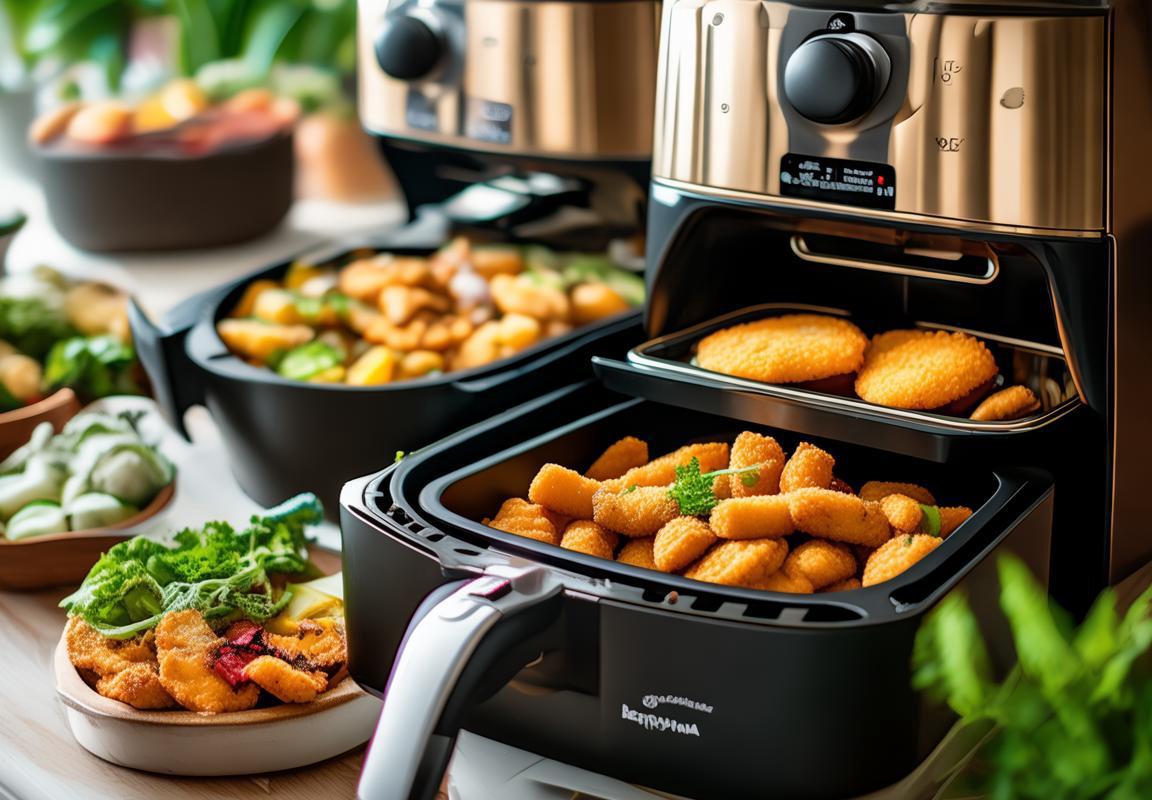
Market Dynamics: Distribution Channels and Retail Trends
In the ever-evolving landscape of the kitchen appliance market, the distribution channels and retail trends for CE certified air fryers have become pivotal in shaping consumer preferences and market growth. The following insights delve into the dynamics at play:
The proliferation of online platforms has significantly transformed the way consumers purchase air fryers. Websites like Amazon, eBay, and specialized kitchen appliance stores have become go-to destinations for customers seeking convenience and a wide range of options. These platforms offer a direct link between manufacturers and end-users, reducing the need for physical retail spaces and lowering overhead costs for retailers.
Retailers have responded by integrating more digital elements into their physical stores. Showrooms with interactive kiosks and augmented reality (AR) experiences allow customers to visualize how air fryers work in their own kitchens before making a purchase. This blend of traditional and digital retailing enhances the shopping experience and can lead to higher conversion rates.
Supermarkets and department stores have also embraced the trend, positioning air fryers alongside other kitchen gadgets and appliances. This proximity to related products increases cross-selling opportunities and highlights the air fryer’s role in a broader kitchen ecosystem.
Specialty kitchen appliance stores have seen a surge in popularity as consumers seek high-quality, brand-specific products. These stores offer personalized service and expertise, which can be a deciding factor for customers looking to invest in a premium air fryer. The focus on brand loyalty and the opportunity for in-store demonstrations have made these outlets a key part of the market dynamics.
The rise of home chefs and influencers has created a demand for unique and innovative air fryers. Retailers who can tap into this niche by offering exclusive models or limited-edition designs often see increased interest and sales. This trend has led to a more diverse product range, catering to both the everyday user and the enthusiast.
Another notable dynamic is the increasing collaboration between manufacturers and retailers. Joint marketing campaigns, exclusive product launches, and loyalty programs have become common strategies to boost sales. These partnerships allow manufacturers to leverage the retailer’s customer base and market reach, while retailers gain access to the latest products and innovations.
The importance of sustainability and eco-friendly practices cannot be overstated. Consumers are increasingly looking for appliances that align with their environmental values. Retailers that stock air fryers with energy-efficient features or made from recycled materials are likely to attract a growing segment of environmentally conscious shoppers.
In the B2B sector, distribution channels have expanded to include not just brick-and-mortar stores but also online wholesale platforms. These channels cater to commercial kitchens, hotels, and restaurants, where air fryers have gained popularity for their ability to produce crispy, healthy food options efficiently. The ease of ordering and the potential for bulk discounts have made online B2B platforms a convenient option for these buyers.
Lastly, the retail trends indicate a shift towards omnichannel experiences. Consumers are looking for seamless transitions between online and offline shopping. This could mean the ability to order online and pick up in-store, or vice versa. Retailers who can offer this cohesive shopping journey are better positioned to capture the market’s attention and loyalty.
The dynamic interplay between distribution channels and retail trends in the CE certified air fryer market continues to shape the landscape. As consumer preferences evolve and technology advances, both manufacturers and retailers must stay agile to capitalize on these shifting dynamics.
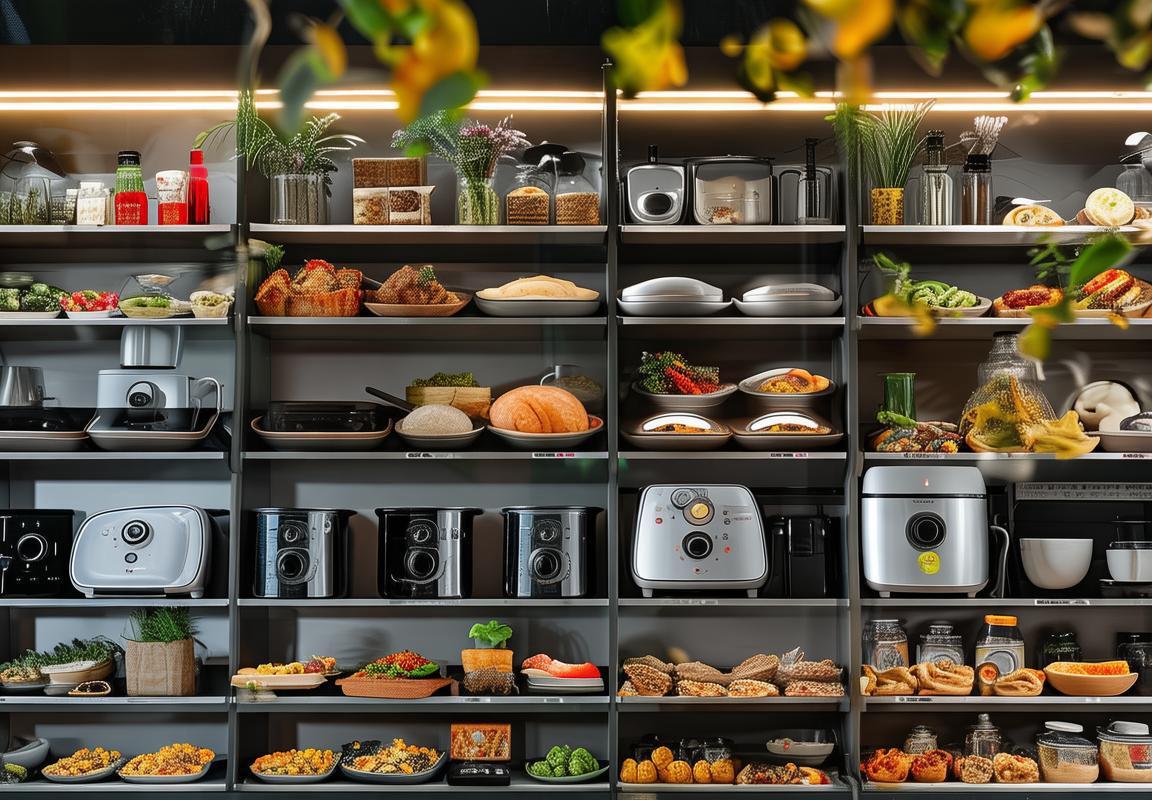
Innovations in Air Fryer Technology: A Closer Look at OEM Solutions
The air fryer market has seen a surge in technological advancements, and Original Equipment Manufacturers (OEMs) have been at the forefront of these innovations. These developments not only enhance the functionality and efficiency of air fryers but also cater to the evolving demands of consumers. Let’s delve into some of the key innovations in air fryer technology and how OEMs are shaping the market.
The integration of smart technology has become a cornerstone in the air fryer industry. Modern air fryers are now equipped with digital interfaces that allow users to program cooking times and temperatures with precision. This level of control ensures that food is cooked to perfection every time, reducing the need for manual adjustments and guesswork.
One significant innovation is the introduction of variable temperature settings. OEMs have recognized that different types of food require different cooking temperatures. By offering a range of heat settings, air fryers can now handle a wider variety of recipes, from crispy French fries to tender chicken breasts.
Another technological leap is the inclusion of automated shut-off features. This safety feature prevents overcooking and potential fires, offering peace of mind to users. The integration of timers with these features ensures that the air fryer turns off automatically once the cooking process is complete, further enhancing user convenience.
Energy efficiency has also been a focal point for OEMs. Newer models are designed to use less energy while still maintaining the high cooking performance that consumers expect. This not only reduces utility bills but also aligns with the growing global trend towards sustainability.
The ability to cook a variety of foods in one appliance is another innovation that OEMs are focusing on. Air fryers with multi-functional capabilities, such as roasting, baking, and even dehydrating, are becoming increasingly popular. This versatility is a direct response to consumers’ desire for a single appliance that can handle multiple cooking tasks.
In terms of design, OEMs are exploring new materials and finishes that are not only aesthetically pleasing but also durable. The use of non-stick coatings that are PFOA-free is becoming standard, as consumers become more health-conscious and environmentally aware. Additionally, compact and space-saving designs are in demand, as consumers seek appliances that can fit into smaller kitchens or multi-functional kitchen spaces.
The inclusion of wireless connectivity is another area where OEMs are pushing boundaries. Air fryers that can be controlled through smartphones or tablets offer users the convenience of remote cooking and monitoring. This feature is particularly appealing to busy individuals who want to prepare meals ahead of time or while they are away from home.
Safety features are also being enhanced. From child locks to anti-slip bases, OEMs are incorporating design elements that make air fryers safer for the entire family. These features are not only a response to consumer concerns but also a reflection of the industry’s commitment to safety standards.
Customizable cooking programs are becoming more common, allowing users to save their favorite settings and recipes. This personalization feature is a testament to the air fryer’s evolution from a simple cooking appliance to a kitchen companion that can adapt to individual preferences.
In terms of health benefits, OEMs are highlighting the low-fat, low-calorie aspect of air frying. As consumers become more health-conscious, the emphasis on healthy cooking methods is growing. OEMs are leveraging this trend by showcasing the health benefits of air fryers in their marketing and product development.
Lastly, the customization of air fryers is becoming more accessible. Users can now choose from a variety of sizes, colors, and even add-ons like air fryer lids or additional baskets. This level of customization allows consumers to find an air fryer that fits their style and needs.
In conclusion, the innovations in air fryer technology are vast and varied, all aimed at improving user experience, enhancing safety, and catering to the health-conscious consumer. OEMs are playing a pivotal role in shaping the market, and their solutions are driving the air fryer industry forward.
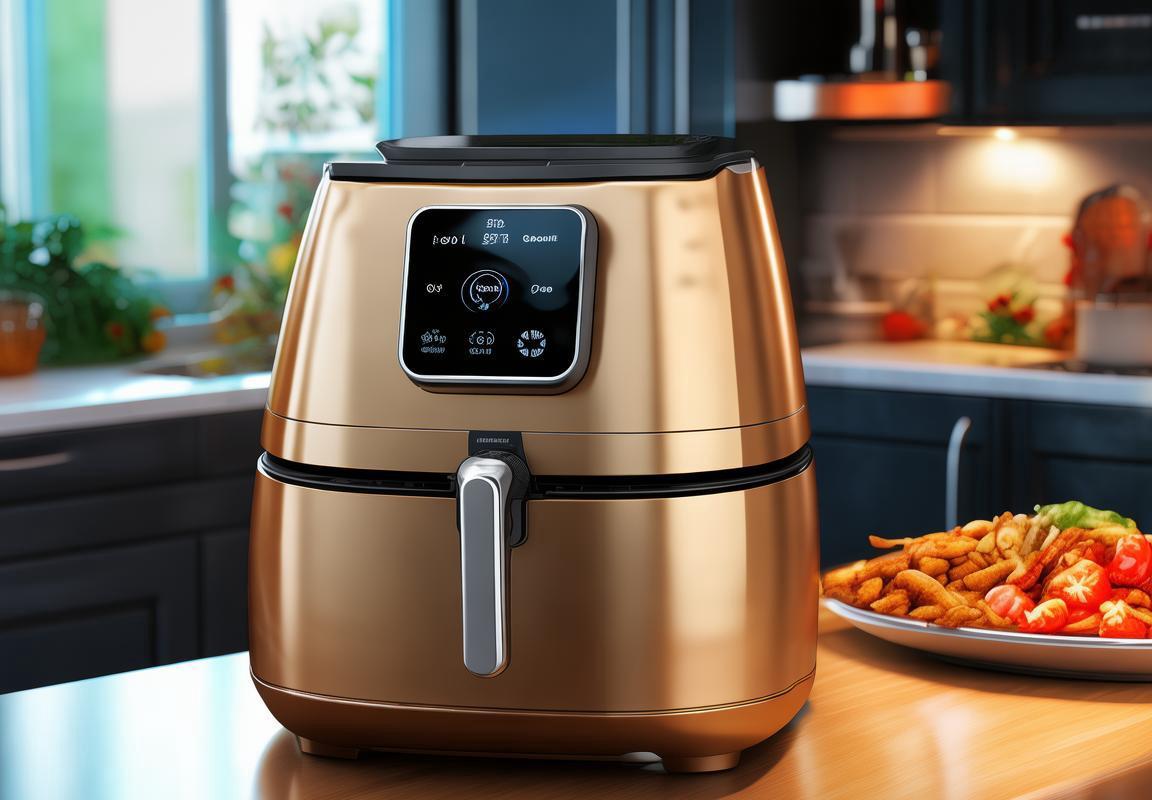
Impact of Global Trends on CE Certified Air Fryer OEMs
The global trend towards healthier eating habits has significantly influenced the demand for CE certified air fryer OEMs. Consumers are increasingly seeking out kitchen appliances that offer a healthier alternative to traditional frying methods. This shift has spurred a wave of innovation and has become a major driver for OEMs in the air fryer market.
Air fryers have become a staple in modern kitchens, thanks to their ability to cook food with a fraction of the oil typically used in frying. This not only makes the food healthier but also more appealing to health-conscious consumers. As a result, OEMs are under pressure to continuously improve their technology to meet the evolving needs of the market.
One key trend is the integration of smart technology into air fryers. Smart air fryers can be controlled remotely through smartphones, allowing users to monitor and adjust cooking times and temperatures from anywhere. This connectivity feature not only adds convenience but also enhances the user experience, making these appliances more attractive to tech-savvy consumers.
Sustainability is another global trend that is reshaping the CE certified air fryer market. OEMs are now focusing on creating more energy-efficient models that consume less power while still providing excellent cooking results. This shift is not only good for the environment but also for consumers looking to reduce their energy bills.
The rise of eco-friendly materials in the manufacturing process is also a notable trend. OEMs are exploring biodegradable and recycled materials to reduce the environmental impact of their products. This focus on sustainability is not just a marketing strategy but a genuine commitment to corporate social responsibility.
The global pandemic has had a profound impact on consumer behavior, which in turn has affected the air fryer OEMs. The shift to home cooking and meal prepping has accelerated the demand for countertop appliances like air fryers. OEMs have had to adapt quickly, ensuring their supply chains can meet the sudden surge in demand without compromising on quality.
International trade agreements and tariffs have become a critical factor for OEMs. The cost of importing and exporting air fryers can vary widely depending on these agreements, and OEMs must navigate these complexities to maintain competitive pricing. Additionally, adherence to various international safety standards is essential, which requires a deep understanding of global regulations.
The influence of social media and influencer marketing cannot be overstated. Online reviews and social media posts by influencers have a significant impact on consumer purchasing decisions. OEMs must invest in marketing strategies that leverage these platforms to reach their target audience effectively.
Market diversification is another trend that is shaping the CE certified air fryer market. OEMs are not just focusing on traditional markets but are also exploring emerging markets where there may be a growing middle class with increasing disposable income. This expansion into new markets requires a nuanced understanding of local preferences and regulations.
The rise of health-focused cooking shows and documentaries has also played a role in the demand for air fryers. As these programs highlight the benefits of cooking with less oil, viewers are more likely to consider air fryers as a viable option for their own kitchens.
In conclusion, the global trends affecting CE certified air fryer OEMs are diverse and multifaceted. From health consciousness to technological advancements, sustainability to market diversification, OEMs must stay agile and innovative to meet the dynamic demands of the market. Adapting to these trends not only ensures the survival of the air fryer OEMs but also positions them for long-term growth and success.
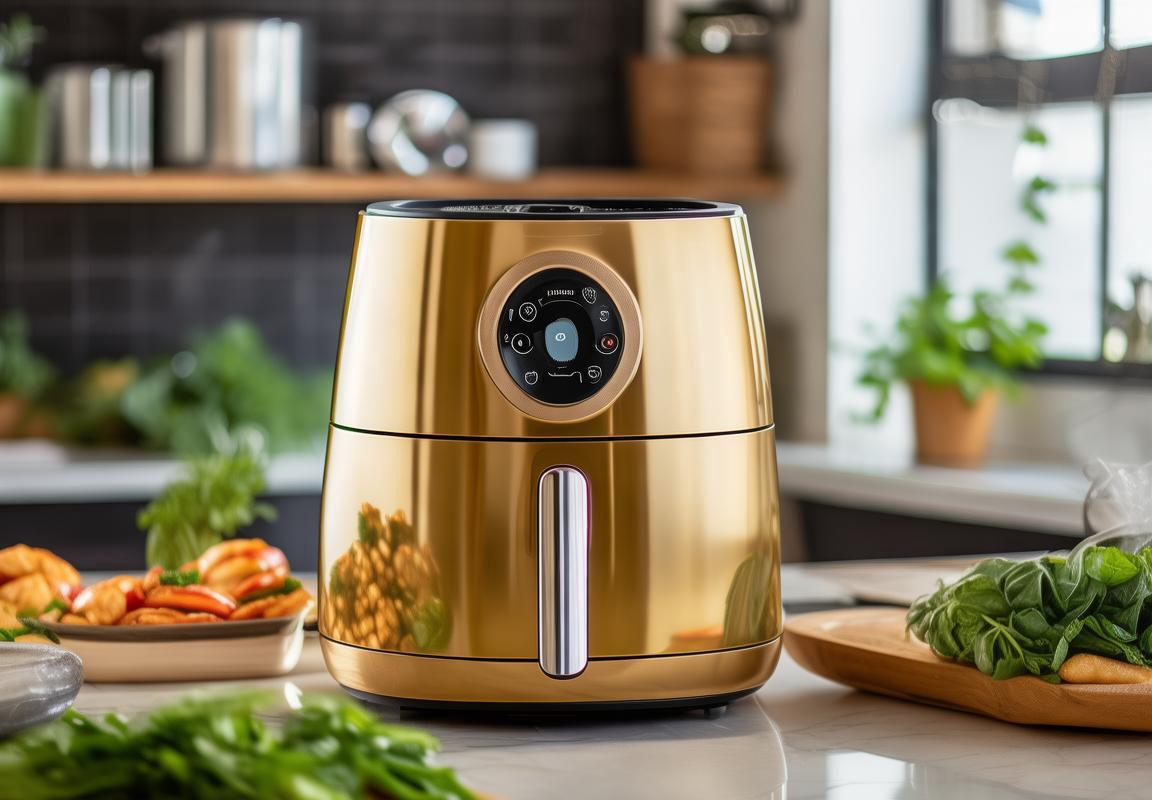
Case Studies: Successful CE Certified Air Fryer OEMs in the European and US Markets
In the ever-evolving landscape of kitchen appliances, the rise of CE certified air fryers has been nothing short of transformative. This trend has been fueled by a variety of factors, including health-conscious consumer preferences, technological advancements, and the global shift towards energy-efficient and sustainable living. Let’s delve into some of the key factors that have propelled the demand for CE certified air fryers.
The surge in health awareness has played a pivotal role. As consumers become more educated about the impact of cooking methods on food quality and nutritional value, the air fryer, with its ability to cook with less oil, has become an appealing alternative to traditional frying. This shift towards healthier cooking methods has created a significant demand for air fryers that meet stringent safety and quality standards, which is where CE certification comes into play.
Energy efficiency is another driving force. With the increasing focus on reducing carbon footprints, appliances that consume less energy are gaining traction. CE certified air fryers are designed to adhere to high energy efficiency standards, which not only benefits the environment but also resonates with consumers who are looking to save on utility bills.
The integration of smart technology has also contributed to the popularity of CE certified air fryers. Modern air fryers often come with features like digital temperature controls, automatic shut-off, and even Bluetooth connectivity for remote operation. These innovations enhance user convenience and safety, making them more attractive to tech-savvy consumers.
The globalization of the kitchen appliance market has expanded the reach of CE certified air fryers. As these appliances gain popularity in one region, they often find their way into other markets, thanks to global supply chains that facilitate the distribution of high-quality, certified products.
Regulatory compliance is a critical factor for manufacturers looking to tap into this market. CE certification ensures that air fryers meet the essential health, safety, and environmental protection requirements of the European Union. This certification is also recognized in many other countries, making it a valuable asset for OEMs seeking to expand their international footprint.
The competitive landscape of the air fryer market is shaped by rapid innovation and product differentiation. Manufacturers are constantly striving to offer unique features that set their products apart from the competition. This focus on innovation is a key driver of demand for CE certified air fryers, as consumers are enticed by the latest technological advancements.
E-commerce has significantly impacted the distribution channels for CE certified air fryers. Online platforms have made it easier for consumers to research and purchase these appliances, leading to a shift in retail trends. Many OEMs have adapted by focusing on e-commerce strategies and optimizing their products for online sales.
Consumer demand for variety and customization has also influenced the market dynamics. OEMs are now offering a wide range of air fryer models, from compact countertop units to larger, countertop ovens that can double as air fryers. This diversity caters to different consumer needs and preferences, further driving demand.
The rise of health food and meal prep culture has bolstered the demand for CE certified air fryers. As more people embrace homemade meals and healthy cooking practices, the air fryer has become a staple in many kitchens. This cultural shift has made health-conscious consumers a key target market for OEMs.
The importance of certifications like CE cannot be overstated. For consumers, CE certification provides assurance that the air fryer they are purchasing has been rigorously tested for safety and compliance with European standards. For manufacturers, it serves as a quality seal that can open doors to new markets and build trust with consumers.
In conclusion, the demand for CE certified air fryers is driven by a confluence of factors, including health trends, technological innovation, energy efficiency, and global market dynamics. As these trends continue to evolve, so too will the strategies of OEMs to meet the needs of a consumer base that values both health and convenience.
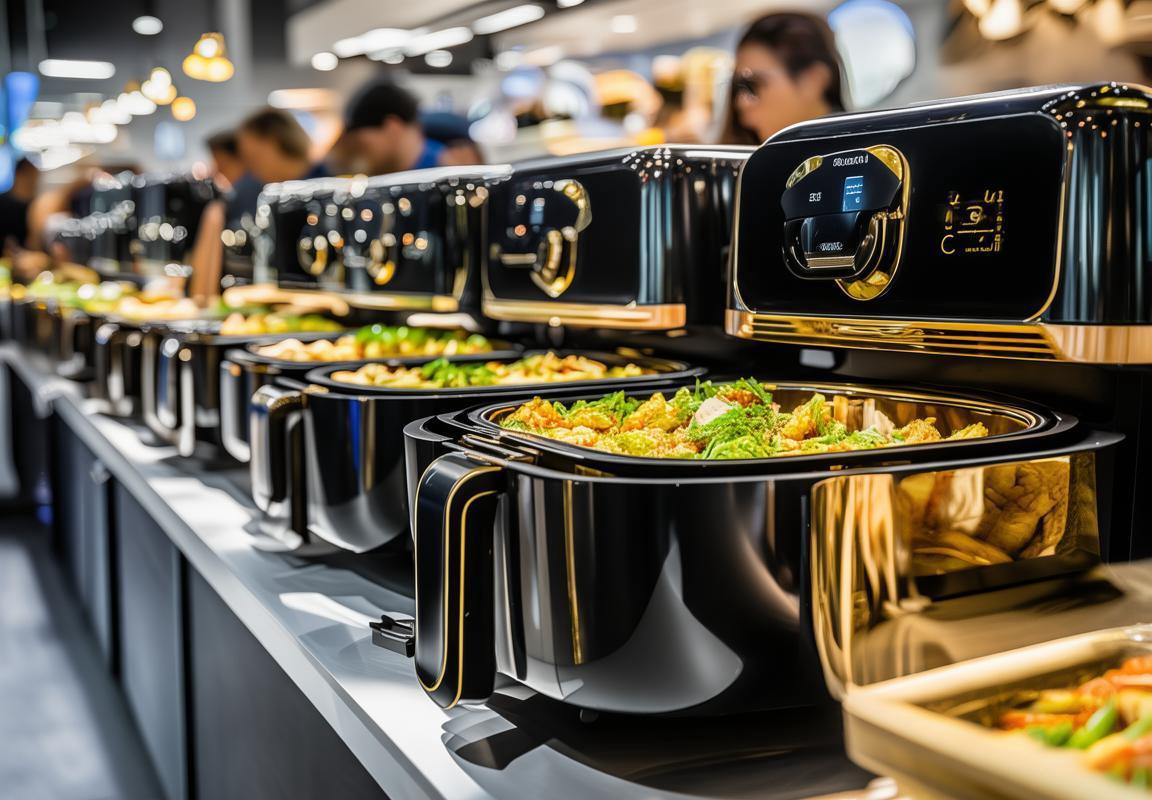
Challenges and Opportunities for Air Fryer OEMs
The competitive landscape for air fryer Original Equipment Manufacturers (OEMs) is shaped by a myriad of challenges and opportunities that are both unique to the industry and reflective of broader market trends. Here’s a closer look at some of the key hurdles and possibilities:
Innovation in TechnologyThe rapid pace of technological advancement in the kitchen appliance sector means that OEMs must continuously innovate to stay ahead. This includes not just the development of new features in air fryers but also the integration of smart technology, such as connectivity to smartphones for remote control and monitoring.
Market SaturationWhile the demand for air fryers continues to grow, the market is becoming increasingly saturated with various brands and models. OEMs must navigate this crowded space by differentiating their products through unique selling propositions (USPs) and strong branding.
Environmental and Health ConcernsConsumers are increasingly aware of the environmental impact of their purchases and the health benefits of air frying over traditional frying methods. OEMs that can address these concerns, such as by offering energy-efficient models or those made with sustainable materials, may find a competitive edge.
Regulatory ComplianceCE certification is a critical factor for air fryer OEMs, as it ensures compliance with European safety and health standards. Navigating the certification process can be complex, but it’s essential for market access and consumer trust.
Cost ManagementThe cost of production, especially for OEMs that outsource manufacturing, can be a significant challenge. Balancing quality with cost is crucial, as consumers are sensitive to price points. OEMs must find ways to optimize their supply chains and reduce overhead without compromising on quality.
Global ExpansionExpanding into new markets, particularly in emerging economies, offers vast opportunities for growth. However, this also requires a deep understanding of local regulations, consumer preferences, and distribution channels.
Consumer Behavior and DemographicsUnderstanding the changing demographics and consumer behavior is vital. For instance, the rise of health-conscious consumers has led to a demand for air fryers that can offer healthier cooking options. OEMs that can cater to these trends will likely see increased sales.
Marketing and BrandingEffective marketing and branding strategies are essential for OEMs to stand out in a crowded market. This includes leveraging social media, influencer partnerships, and targeted advertising to reach the right audience.
Product Lifecycle ManagementSuccessfully managing the lifecycle of an air fryer, from design to disposal, is a challenge. OEMs must consider how to make their products durable and sustainable while also planning for the next generation of products.
Customer Service and SupportProviding exceptional customer service and support can be a differentiator. OEMs that offer comprehensive after-sales service, including warranty and technical assistance, can build long-term customer loyalty.
Intellectual Property RightsProtecting intellectual property is crucial for OEMs to maintain a competitive advantage. This involves securing patents, trademarks, and copyrights for unique features or designs.
E-commerce IntegrationWith the rise of online shopping, integrating e-commerce into the sales strategy is more important than ever. OEMs must ensure their products are easily discoverable and purchaseable online, often through partnerships with major e-commerce platforms.
Supply Chain ResilienceThe global supply chain disruptions have highlighted the importance of supply chain resilience. OEMs must develop strategies to mitigate risks, such as diversifying suppliers and maintaining inventory buffers.
Sustainability InitiativesAs sustainability becomes a core value for many consumers and businesses, OEMs that adopt eco-friendly practices, such as using recycled materials or designing for circularity, can attract a growing market segment.
In conclusion, the challenges and opportunities for air fryer OEMs are multifaceted. By focusing on innovation, market differentiation, regulatory compliance, and understanding consumer needs, OEMs can navigate the complexities of the market and capitalize on the numerous growth opportunities available.
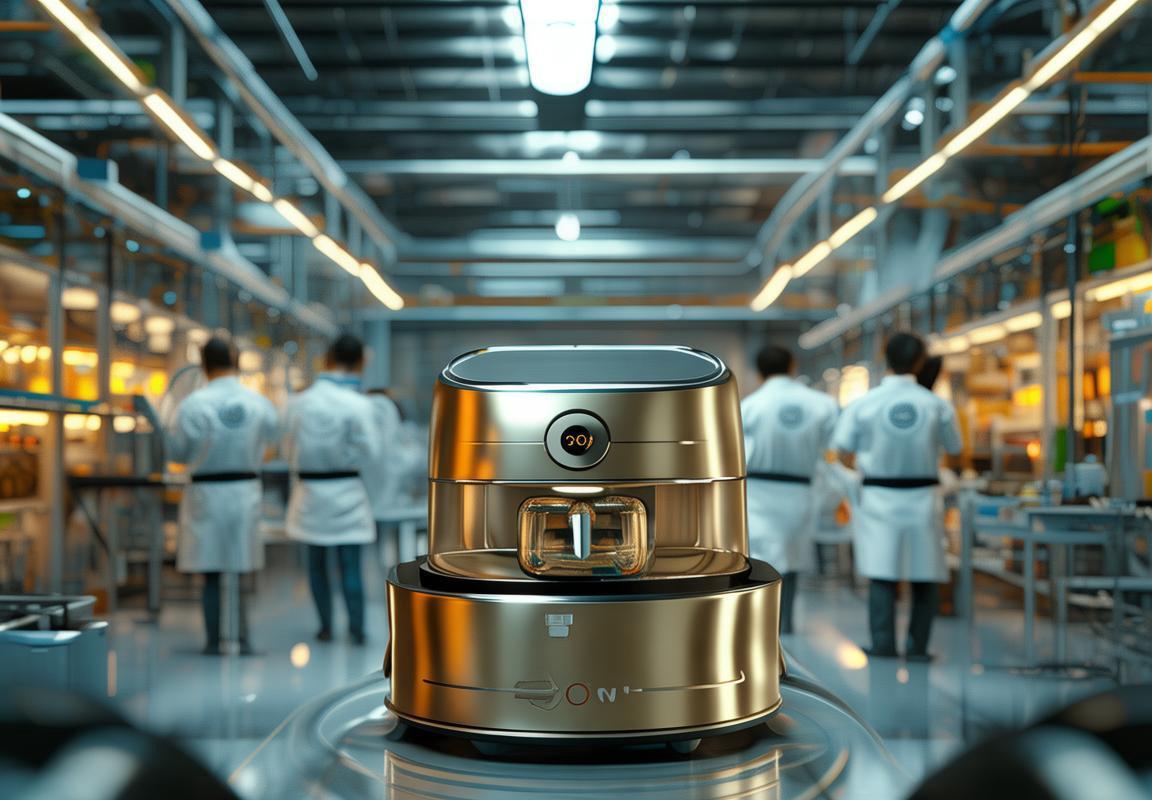
Predictions for the Future of CE Certified Air Fryer OEMs
The rapid evolution of the air fryer market has been marked by significant innovations, and as Original Equipment Manufacturers (OEMs) navigate the landscape, they are faced with a blend of challenges and opportunities. Here’s a closer look at the factors shaping the landscape for CE certified air fryer OEMs.
Consumer Health AwarenessOne of the most compelling opportunities for air fryer OEMs lies in the growing health consciousness among consumers. With the rise of obesity and related health issues, there’s a heightened demand for healthier cooking methods. Air fryers, offering a healthier alternative to traditional frying, are capitalizing on this trend. OEMs can leverage this by emphasizing the health benefits of their products, such as lower fat content and reduced oil usage.
Technological AdvancementsThe continuous advancement in technology presents a unique opportunity for OEMs to differentiate their products. Features like smart technology integration, precise temperature control, and programmable settings can enhance user experience and attract tech-savvy consumers. As OEMs invest in research and development, they can develop air fryers that not only cook food efficiently but also provide data analytics on cooking habits, further adding value to the product.
Sustainability FocusSustainability is a growing concern worldwide, and air fryer OEMs can tap into this market by producing eco-friendly appliances. Materials like recycled plastics and energy-efficient designs are becoming increasingly important. By aligning with sustainability initiatives, OEMs can appeal to environmentally conscious consumers and potentially secure certifications that enhance their brand reputation.
Global Market ExpansionExpanding into new markets is a significant opportunity for CE certified air fryer OEMs. While Europe and the US have been key markets, there’s a vast potential for growth in emerging economies where there’s a rising middle class and an interest in healthier lifestyles. OEMs that can adapt their products to local preferences and regulations will find new avenues for growth.
Regulatory ComplianceNavigating the complex web of regulations is a challenge but also an opportunity. CE certification, which ensures that products meet EU safety, health, and environmental protection standards, is a must for entering the European market. OEMs that can streamline the certification process and maintain compliance can gain a competitive edge over those that struggle with these hurdles.
Competitive LandscapeThe competitive landscape for air fryer OEMs is fierce, with numerous players vying for market share. To stand out, OEMs must focus on product differentiation, branding, and customer service. Investing in marketing and building a strong brand identity can help OEMs carve out a niche in a crowded market.
Supply Chain ManagementEfficient supply chain management is crucial for OEMs to keep costs down and maintain inventory levels. Challenges such as global supply chain disruptions can impact production and lead times. However, with strategic partnerships and just-in-time manufacturing, OEMs can mitigate these risks and maintain a competitive edge.
Customer Service and SupportProviding excellent customer service and support is essential for retaining customers and building loyalty. OEMs that offer robust after-sales services, including warranty coverage and easy-to-access customer support, can enhance the customer experience and differentiate themselves from competitors.
Adaptation to Changing Consumer PreferencesConsumer preferences are constantly evolving, and OEMs must be agile enough to adapt. This means staying abreast of the latest trends, such as the growing popularity of plant-based diets, and designing air fryers that can accommodate a variety of cooking styles and ingredients.
The rise of online shoppingThe shift towards online retail has opened new doors for air fryer OEMs. By optimizing e-commerce strategies and leveraging social media platforms, OEMs can reach a wider audience and tap into the convenience of online shopping. This trend is particularly significant for OEMs looking to enter new markets or cater to consumers who prefer the ease of online purchasing.
As we look to the future, the air fryer market is poised for continued growth, driven by health-conscious consumers, technological advancements, and a global shift towards sustainability. OEMs that can navigate the challenges and capitalize on the opportunities presented by these trends will be well-positioned to thrive in the competitive landscape of CE certified air fryer manufacturing.